Lifestyle
Canadians put off by Trump’s bluster and border arrests are booking far fewer US visits

VANCOUVER, British Columbia (AP) — Diana and Rick Bellamy initially planned to take a Caribbean cruise out of Houston before heading to Laurel, Mississippi, to visit the home of one of their favorite HGTV shows, “Home Town.”
The Calgary couple scrapped those plans and vacationed last month along Mexico’s Pacific coast instead, put off by U.S. President Donald Trump’s trade war with Canada, the insults he’s hurled at their homeland, and stories about American border agents searching people’s phones and detaining foreigners for minor reasons.
She found it ironic that she felt more comfortable traveling to Mexico than the U.S.
“I never thought I would hear myself say that,” Diane Bellamy said.
Trump’s attacks on Canada’s economy and threats to make it the 51st state have infuriated Canadians, who are canceling trips to the U.S. in big numbers. They also seem to have also flipped the narrative heading into Canada’s parliamentary elections on Monday, with Prime Minister Mark Carney’s Liberal Party surging after trailing far behind in the polls just a few months ago.
A steep decline
The U.S. gets more visitors from Canada each year than from any other country, according to the U.S. Travel Association, an industry trade group, which said the 20.4 million visits from Canada last year generated $20.5 billion in spending.
But there has been a big drop in foreigners traveling to the U.S. since Trump took office, and Canadians are no exception. There were more than 910,000 fewer land border crossings from Canada into the U.S. last month than in March of 2024 — a more than 22% drop — according to U.S. Customs and Border Protection data. An Air Canada spokesman, meanwhile, said Canada-U.S. flight bookings for April through September are down about 10%.
Trump brushed aside the decline in tourism to the United States on Wednesday, saying, “There’s a little nationalism there I guess, perhaps. It’s not a big deal.”
Traveler worries
Since Trump started his second term, there have been well-publicized reports of tourists being stopped at U.S. border crossings and held for weeks at immigration detention facilities before being allowed to fly home at their own expense.
On March 3, Canadian Jasmine Mooney, an actor and entrepreneur on a U.S. work visa, was detained by U.S. border agents in San Diego. She was released after 12 days detention.
Before Mooney’s release, British Columbia Premier David Eby expressed concern, saying: “It certainly reinforces anxiety that … many Canadians have about our relationship with the U.S. right now, and the unpredictability of this administration and its actions.”
The Canadian Association of University Teachers, which represents faculty and staff at Canadian universities, warned its members against nonessential travel to the U.S. due to the “political landscape” under Trump and reports of Canadians encountering difficulties crossing the border.
Academics who have expressed negative views about the Trump administration should be particularly cautious about traveling to the U.S., said the group.
“People are scared to cross the border. I don’t know what Americans are thinking, quite frankly. Are they that oblivious?” said former Quebec Premier Jean Charest, who has family in Florida.
Mike Sauer, who runs a community policing center in Vancouver, said he and his partner have no interest in traveling to the U.S. now because of Trump’s politics and border fears. One of Sauer’s concerns is that if a border guard were to check his cellphone, the guard might see his past purchases of marijuana, which is legal to buy in Canada and about half the 50 states but is still illegal under U.S. federal law.
“The States have a different view on drugs. They could certainly look at my phone and see I’m 420-friendly,” he said, meaning he’s marijuana-friendly. “I think it kind of depends on which border guard would have a problem with that and which ones wouldn’t.”
Dietra Wilson, 32, said when she was younger, she often visited Detroit, which is just across the border from Windsor, Ontario, where she and her husband, Ben, own a secondhand shop. She hasn’t visited much in recent years, though, and she said she’s heard of people’s worries about crossing the border since Trump moved back into the White House.
“It’s worrisome,” she said.
Ben Wilson, 37, also has qualms about trying to cross.
“Why would I want to?” he said. “Regardless of the tariffs, if I’m going to be stopped at the border for my phone or something somebody texted me, why go?”
Industry worries
The drop in Canadian tourism to the U.S. led California Gov. Gavin Newsom, a frequent target of Trump, to announce an ad campaign this month meant to lure Canadians back to his state, citing a 12% year-on-year drop in February.
McKenzie McMillan, a consultant with a Vancouver-based travel agency, The Travel Group, said the company’s bookings to the U.S. have dried up. “We have seen a near-total collapse of U.S. business,” he said. “Probably about a 90% drop since February.”
Lesley Keyter, the CEO and founder of the Travel Lady agency in Calgary, said she’s seen people actually forfeit money to cancel their U.S. trips.
“Even if they’re going on a Caribbean cruise, they don’t want to go down to Fort Lauderdale to get on the cruise ship,” she said.
___
Gillies reported from Toronto. Associated Press reporter Corey Williams in Windsor, Ontario, contributed to this report.
Lifestyle
Djokovic says tennis will always outlive its star players and he can feel the changes taking place

MADRID (AP) — Novak Djokovic, winner of a record 24 Grand Slam titles, says he can feel the changes taking place in tennis.
People have started to accept, he says, that there is no more Roger Federer, no more Rafael Nadal and — soon — no more Djokovic.
“You can feel there’s a shift,” the 37-year-old said ahead of his opening match at this year’s Madrid Open, where he will try to win a milestone 100th tour-level title.
“Not only in terms of the generations of players (who now have) the main focus and attention. But I guess it takes a little bit of time for people to accept the fact that Roger and Rafa are not playing, and (Andy) Murray, and I guess one day myself.”
Djokovic said he has been trying his best to “represent the older guys, the older generation,” and bring a “positive effect to the tournaments and to the tour itself.”
“That’s also one of the reasons why I keep on playing,” he said. “Because I feel like it also helps tennis still thrive on the attention and crowd coming in, and watching tournaments and getting interested.”
Djokovic noted the “record-breaking” numbers in attendance at the Grand Slams and some ATP 1000 tournaments like Indian Wells.
“(It’s) good news that it shouldn’t be dependent on the big stars or legends of the game that retired,” he said. “The sport should outlive everyone, the sport will outlive everyone, and the sport is more important than anybody individually. So we are all here in the service of a sport as well.
“This is something to keep in mind, that when you play and all the things that you’re doing outside of the court as a top player, you are trying to contribute to the popularity of the tennis, to bring more people, bring young children and people to tennis, and get interested and excited about tennis. I see (it) happening, but we still have big steps to make in that regard.”
Djokovic noted that he was older than some of the current youngsters — such as Spanish star Carlos Alcaraz, 21, — when he began dominating on tour.
“Between, let’s say, 23 and 33 is when it was really happening. And now Carlos is still not 23,” Djokovic said. “We have to remember that his age and what he has done for his age is not also normal. I’m sure that we’ll see a lot of him on the big stage with trophies in the future in, whatever, 10 years, 15 years, as long as he’s playing.”
Alcaraz withdrew from his home tournament because of muscle injuries. He had been in the same half of the draw as Djokovic.
Djokovic, a three-time champion in Madrid, hasn’t played in the Spanish capital since losing to Alcaraz in the 2022 semifinals. He is set to play Italy’s Matteo Arnaldi on Saturday.
Djokovic is seeking his first title of the season after losing in his opening matches both in Monte Carlo and Indian Wells. He reached the final in Miami, losing in straight sets to Jakub Mensik.
Djokovic won his 99th title last August at the Paris Olympics. He has lost four finals since then. The only two players to reach the 100-title milestone were Jimmy Connors (109) and Federer (103).
___
AP tennis: https://apnews.com/hub/tennis
Lifestyle
At shops around the Vatican, Pope Francis was a regular customer and a friend
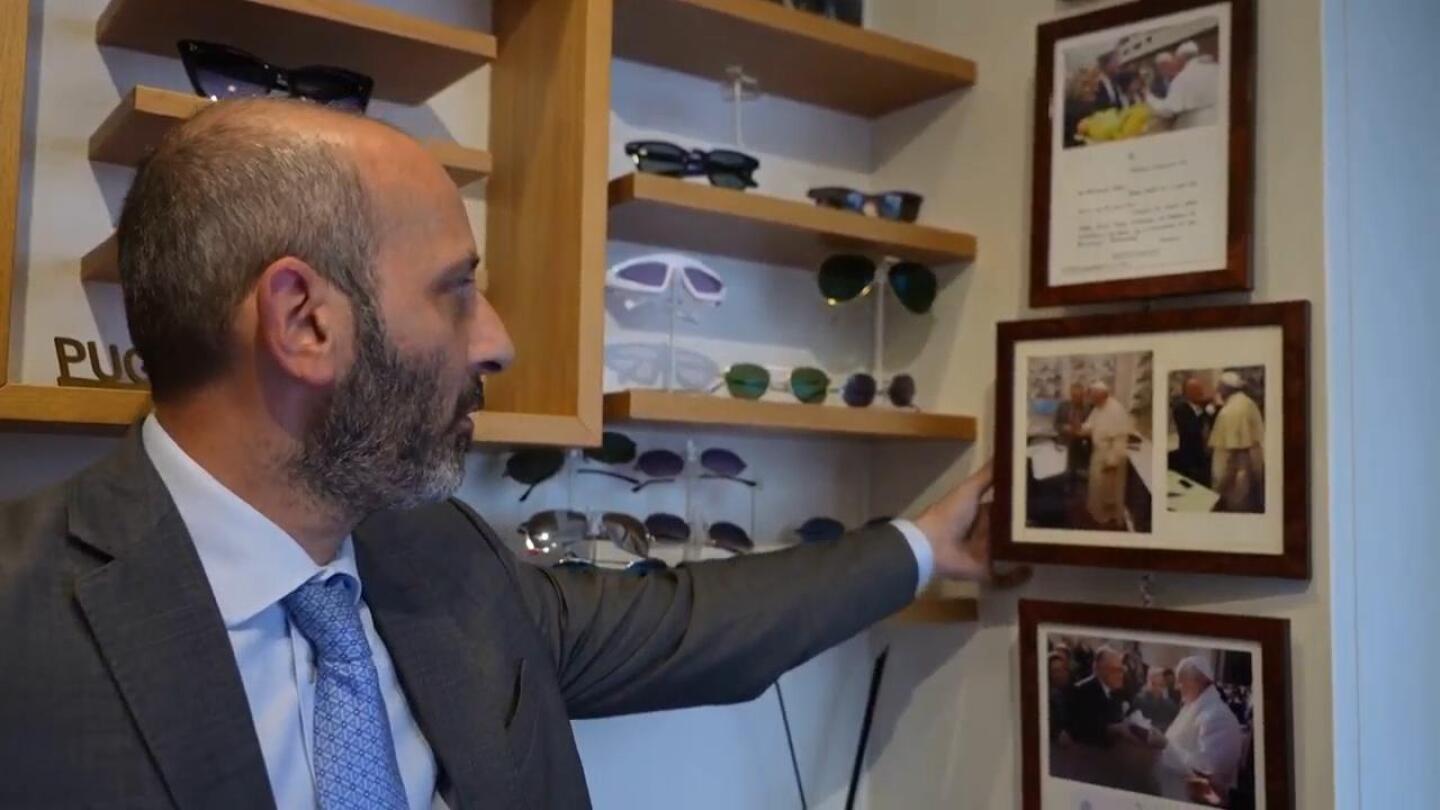
VATICAN CITY (AP) — In the streets around the Vatican, where Pope Francis used to make impromptu outings, some of the shopkeepers are mourning the man they knew, not as the leader of a church or head of state, but as an ordinary person. They prayed for him while he was hospitalized, and now they miss him dearly.
“He had been our regular customer for more than seven years,” said Sebastian Padrón, an Argentine ice cream maker whose store is located around the corner from Francis’ austere hotel room in Vatican City. He recalled how close he and his family felt to Francis, who often gave gifts to his children.
“The memory is wonderful, which is why it hurts so much,” he told The Associated Press on Thursday. Francis had a notorious sweet tooth, and Padrón’s dulce de leche ice cream, a typical Argentine caramel dessert, became the pope’s favorite.
When Francis became pope in 2013, he opted to live in the Domus Santa Marta hotel rather than the lavish papal apartments of the Apostolic Palace, overlooking St. Peter’s Square. The choice spoke to his aversion to luxury, and an eagerness to mix with the masses. He moved around Rome in an ordinary hatchback and popped into stores to buy shoe insoles, change eyeglass lenses and buy recordings of classical music and tango from his native Argentina. He had lamented his inability to walk about freely as he did in Buenos Aires.
“I met a man who was full of smiles, very friendly,” said Raniero Mancinelli, a Roman tailor who sold the basic pectoral cross that Francis wore for decades. Mancinelli, who was tailor to the last three popes, said that, unlike his predecessors, Francis wanted everything to be simple, practical and inexpensive.
Mancinelli said he sold Francis a cardinal’s sash before the conclave that eventually elected him pope. He recalled Francis’ words upon learning the price of the garment:
“Raniero, you’re a bit of a thief, you’re a bit expensive.” The rest of his scarlet cardinal’s outfit, Francis regularly said, was a hand-me-down from his predecessor as archbishop of Buenos Aires.
Francis caused havoc among tourists and Romans several times when he showed up at an optician’s shop in Rome’s historic center.
Luca Spiezia, who owns the store with his father, remembered his surprise at the pope introducing himself simply as “Francesco” when they met in 2015. Offered a new pair of glasses, Francis declined, asking only for new lenses in his old frames and insisting on paying for the work.
“He never made you feel that he was a powerful figure in the world, even though he was the head of the church,” Spiezia said. “I hope that this will be continuing with the next pope.”
Lifestyle
Thousands gather in New Mexico for the largest powwow in North America

ALBUQUERQUE, N.M. (AP) — Thousands of people are gathering in New Mexico for a celebration showcasing Native American and Indigenous dancers, musicians and artisans from around the world.
Billed by organizers as the largest powwow in North America, the annual Gathering of Nations festival kicks off Friday with a colorful procession of dancers spiraling into the center of an arena at the New Mexico state fairgrounds. Participants wear elaborate regalia adorned with jingling bells and dance to the tempo of rhythmic drumming.
The event also features the crowning of Miss Indian World, as well as horse parades in which riders are judged on the craftsmanship of their intricately beaded adornments or feathered headdresses and how well they work with their horses.
Powwow roots
Powwows are a relatively modern phenomenon that emerged in the 1800s as the U.S. government seized land from tribes throughout the Northern and Southern Plains. Forced migrations and upheaval during this period resulted in intertribal solidarity among Plains people and those from the southern prairies of Canada.
Alliances were formed, giving way to the exchange of songs and dances during gatherings between different tribes. In the decades that followed, powwows were advertised to pioneers heading westward as “authentic” Native American dance shows. For some, it was an exploitation of their cultures.
The word powwow was derived from pau wau, an Algonquian Narrtick word for “medicine man,” according to the Smithsonian Center for Folklife and Cultural Heritage. Scholars say English settlers misused the word to refer to the meetings of medicine men and later to any kind of Native American gathering.
Today, some of the large powwows like the Gathering of Nations have become more commercialized events that use dancing and drumming competitions with big prize money to provide a glimpse into Indigenous cultures.
Reconnecting with culture
At ceremonial dances, participants wear traditional regalia specific to their tribe, whereas powwow attire often is more contemporary and flashy with sequins and sparkles. It’s about dressing to impress the judges, said Warren Queton, a Kiowa Tribe legislator and adjunct instructor at the University of Oklahoma who has participated in community dancing and cultural events since he was a boy.
Queton, who served as the head gourd dancer at the university’s recent spring powwow, said ceremonial dances are deeply rooted in community, identity and cultural values.
It’s a struggle to keep traditional cultural practices and commercial powwows from being lumped into the same category, he said. They have very different meanings in Native American and Indigenous cultures.
There has been a focus on promoting smaller powwows held in tribal communities. Queton said these gatherings serve as a way for people who live elsewhere to return home and reconnect with their families and the land, and to share traditions with younger generations.
“Knowing where you come from, your land, your oral traditions, your language, but also values and traits — that can only be learned from a community,” he said. “That’s why those smaller dances are so important because people learn those community values. They’re all a part of our identity.”
Capturing good energy
There still are elements of tradition woven in to modern powwows. Competitors wear feathered bustles, buckskin dresses, fringed shawls and beaded head and hair pieces. Some of the elaborate outfits are hand-stitched designs that can take months to complete.
The sounds, movements and emotions that radiate from the dancing are challenging to capture on canvas. But Cochiti Pueblo painter Mateo Romero did just that when he partnered with the U.S. Postal Service to create a series of powwow stamps to be unveiled Friday during Gathering of Nations.
Powerfully hypnotic, atavistic and somatic is how the artist describes the dancing. One of his pieces depicts what is known as a fancy shawl dance with its dips, pivots, hops and twirls. Each tassel on the shawl flows and flips, accentuating the dancer’s movements.
Romero said he used color, thick and thin paint and soft and hard edges along with photographic elements to create something that feels alive, embedded with feeling and bright pops of color.
Romero called it a huge honor to transform powwow culture into a postage stamp filled with “good energy.”
“I look at it as a sort of vehicle to express this sentiment, the energy, the celebration, the vibration, the beauty of it,” he said. “It’s the power of it.”
-
Europe2 days ago
How to visit Rome for Pope Francis’ funeral and conclave
-
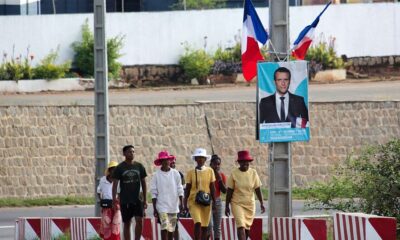
 Africa2 days ago
Africa2 days agoEmmanuel Macron starts two-day visit to Madagascar
-
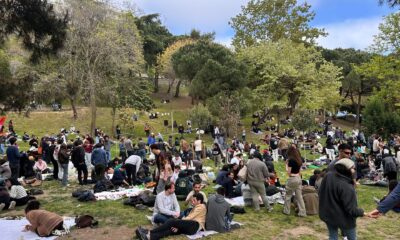
 Middle East2 days ago
Middle East2 days ago‘I grabbed my cat and ran’: Istanbul panics as earthquake hits | Earthquakes News
-
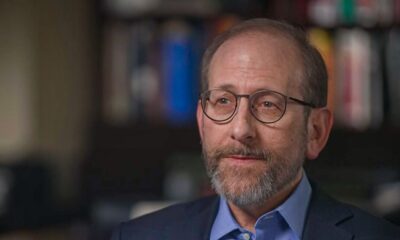
 Education2 days ago
Education2 days agoHarvard’s president says the school will ‘not compromise’ on its rights with the Trump admin
-
Africa2 days ago
Italy launches security plan ahead of pope’s funeral
-

 Europe1 day ago
Europe1 day ago‘The Art of the Deal’ meets global reality
-
Europe2 days ago
New Prince Louis photo released to mark 7th birthday
-
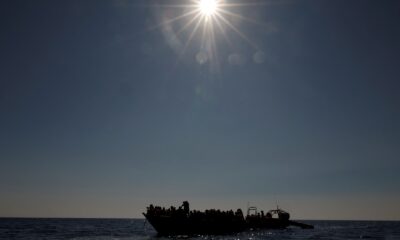
 Middle East2 days ago
Middle East2 days ago‘I don’t know where I will go’: Refugees run out of options in Tunisia | Migration News



